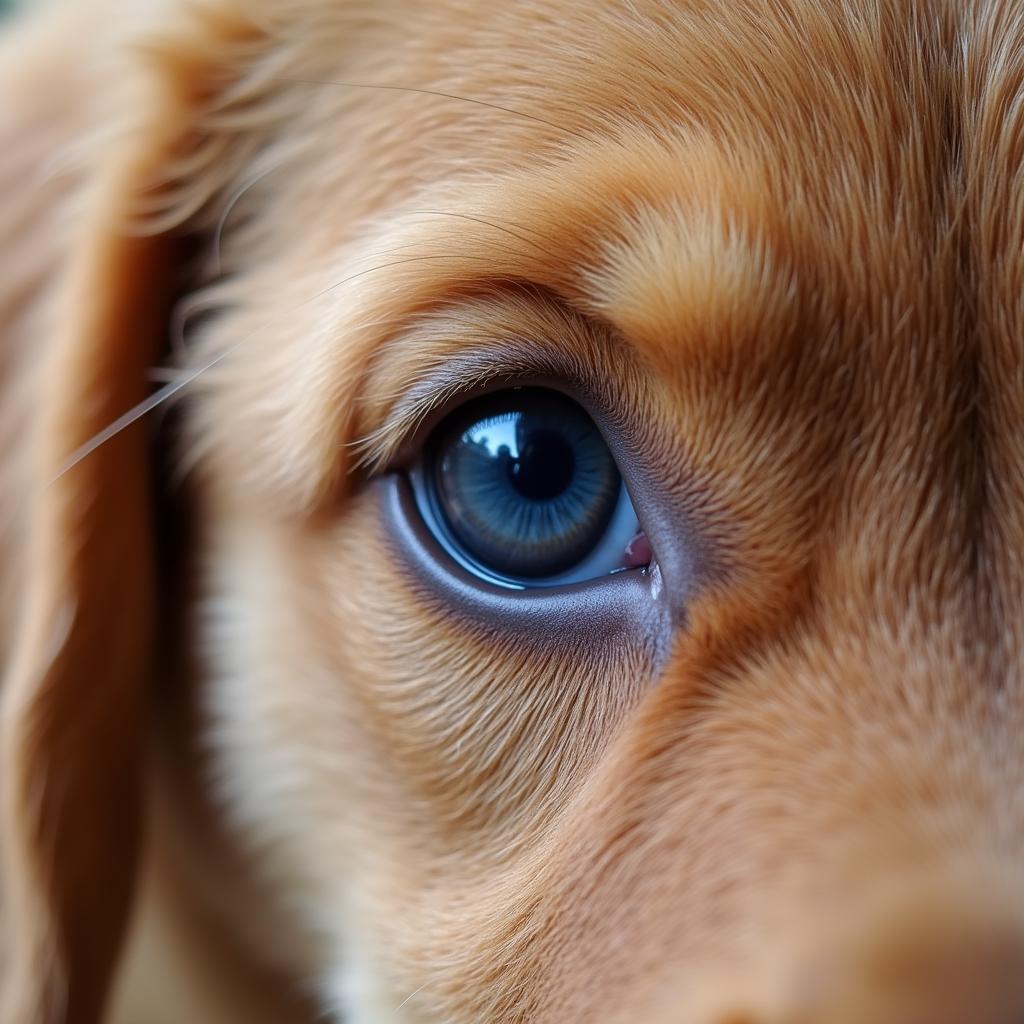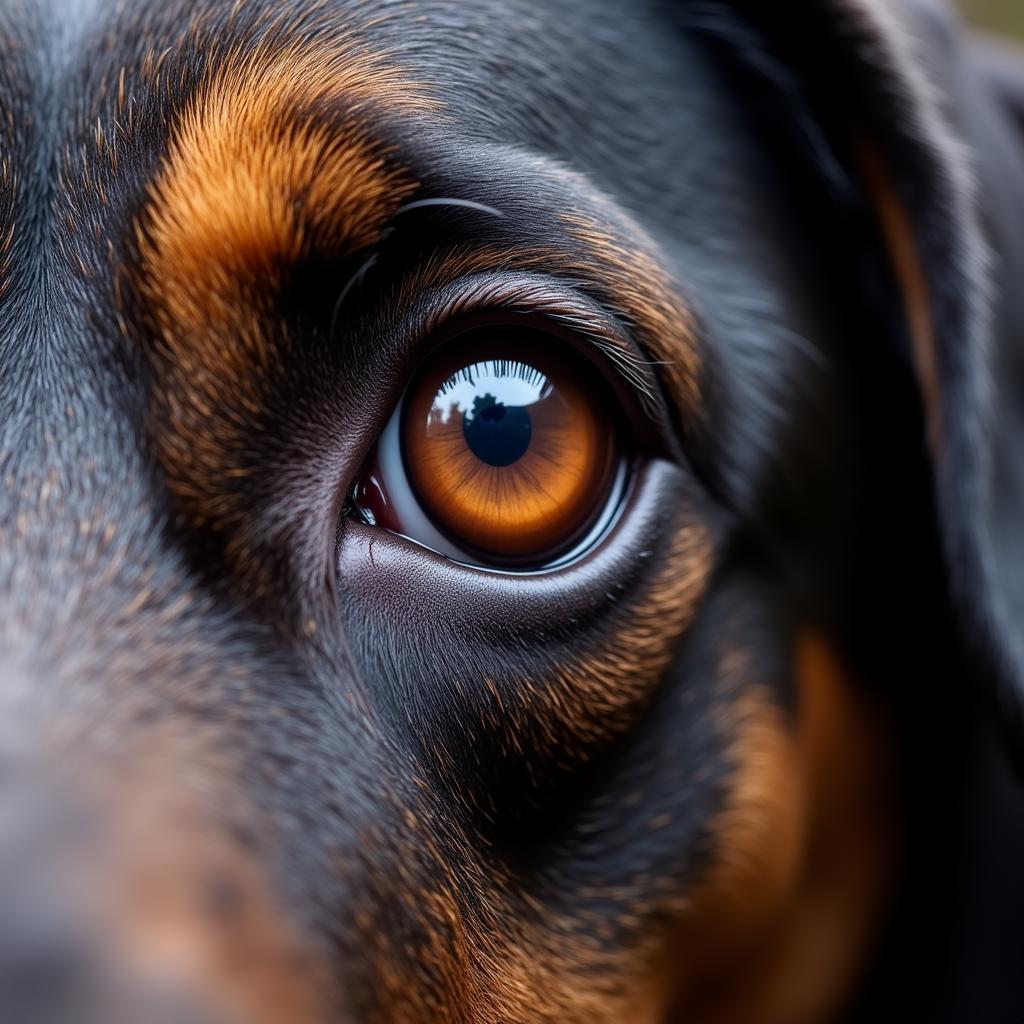You might notice a shift in your furry friend’s gaze as they grow, a transformation from puppyhood’s soft hues to the striking shades they sport as adults. Ever wondered, “When do dogs’ eyes change color?” You’re not alone! This article delves into the fascinating world of canine eye color development, revealing the science behind those captivating changes.
The Science Behind the Shift: Why Do Dogs’ Eyes Change Color?
Just like in humans, a pigment called melanin dictates eye color in dogs. Melanin production increases as puppies mature, leading to a gradual change in their eye color. This process, typically spanning several weeks or months, begins around 3-5 weeks of age and can continue until your canine companion reaches 6-8 months old, sometimes even later.
 Puppy Eyes Changing Color
Puppy Eyes Changing Color
Factors Influencing Canine Eye Color
While genetics play a primary role, other factors can influence the final shade your dog’s eyes settle on:
- Breed: Certain breeds, like Huskies, are known for their striking blue eyes, often retaining this hue into adulthood. Other breeds, like Labrador Retrievers, typically develop brown eyes.
- Coat Color: There’s often a correlation between coat color and eye color. For example, dogs with darker coats often have brown eyes.
- Melanin Production: The amount of melanin produced varies between individual dogs, even within the same breed. This variation contributes to the diversity of eye colors we see.
The Timeline of Transformation: When to Expect the Change
Understanding the typical timeline of eye color change can be helpful for new puppy parents:
- 3-5 Weeks: At this age, puppies start opening their eyes, often revealing a cloudy blue color due to minimal melanin production.
- 6-8 Weeks: As melanin production increases, you might notice a subtle shift in eye color, with shades of green, amber, or brown starting to emerge.
 Adult Dog Eyes
Adult Dog Eyes - 3-4 Months: By this stage, most puppies will have undergone a significant color change, with their adult eye color becoming more apparent.
- 6-8 Months & Beyond: For some breeds, eye color might continue to develop subtly even after six months. However, by this age, their eye color is generally considered final.
What About Heterochromia in Dogs?
Have you ever seen a dog with one blue eye and one brown eye? This mesmerizing phenomenon, known as heterochromia, occurs when different amounts of melanin are present in each iris. While striking, it’s typically harmless and doesn’t affect vision.
When Should You Consult a Vet?
While eye color change is usually a natural part of puppyhood, certain signs warrant a trip to the veterinarian:
- Sudden Changes: If you notice any abrupt changes in your dog’s eye color, especially in adult dogs, consult your vet immediately.
- Redness, Swelling, or Discharge: These could indicate an eye infection or other issues requiring veterinary attention.
Maintaining Your Dog’s Eye Health
Regular veterinary checkups are crucial for maintaining your dog’s overall health, including their eye health.
Conclusion
Watching your puppy’s eyes transform from a soft blue to their adult shade is a captivating experience. Understanding the factors influencing this change, the typical timeline, and potential concerns can help you navigate this exciting phase of your furry friend’s development.
FAQs
1. Is it normal for one of my puppy’s eyes to change color faster than the other?
Yes, it’s perfectly normal for one eye to develop its final color slightly faster than the other.
2. Can a dog’s eye color change due to illness?
While rare, certain health conditions can affect melanin production and lead to eye color changes.
3. What is the rarest eye color in dogs?
Green is considered one of the rarest eye colors in dogs.
4. Do dogs with blue eyes have more vision problems?
While certain breeds with blue eyes might be prone to specific eye conditions, blue eyes alone don’t necessarily indicate poor vision.
5. Can a dog’s eyes change color as they age?
While subtle changes can occur as dogs age, significant shifts in eye color after puppyhood are uncommon.
Need more insights into the fascinating world of canine vision? Check out these articles:
- Does Colorado have bears?
- What is the rarest husky eye color?
- What color do dogs see red as?
- Can dogs see all the colors in Bluey?
- How many colors do you see?
For personalized advice and to ensure your furry friend’s eyes stay healthy and bright, consult with your veterinarian.
Need support? Contact us:
Phone Number: 0373298888
Email: [email protected]
Address: 86 Cầu Giấy, Hà Nội
Our customer service team is available 24/7 to assist you.

